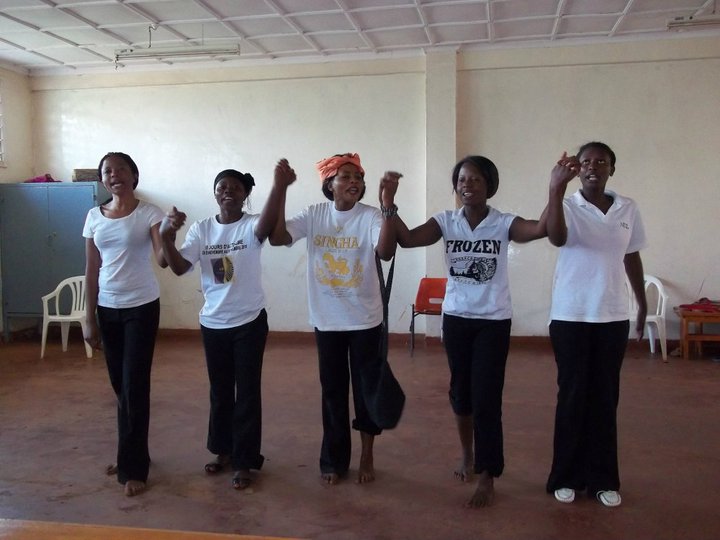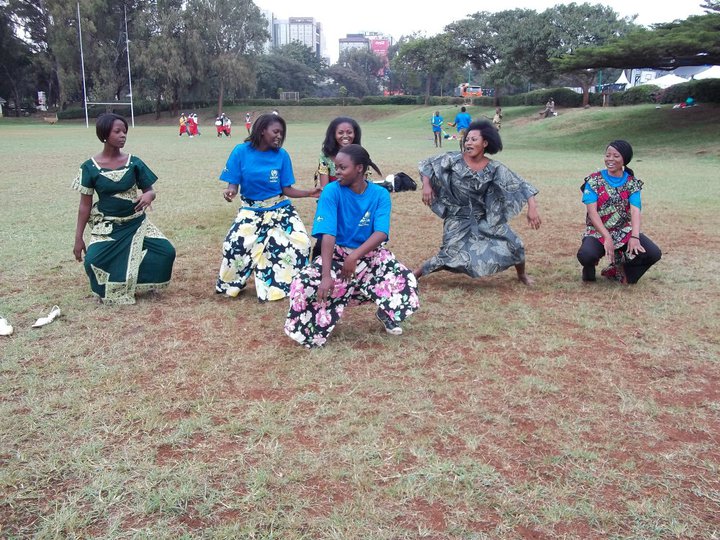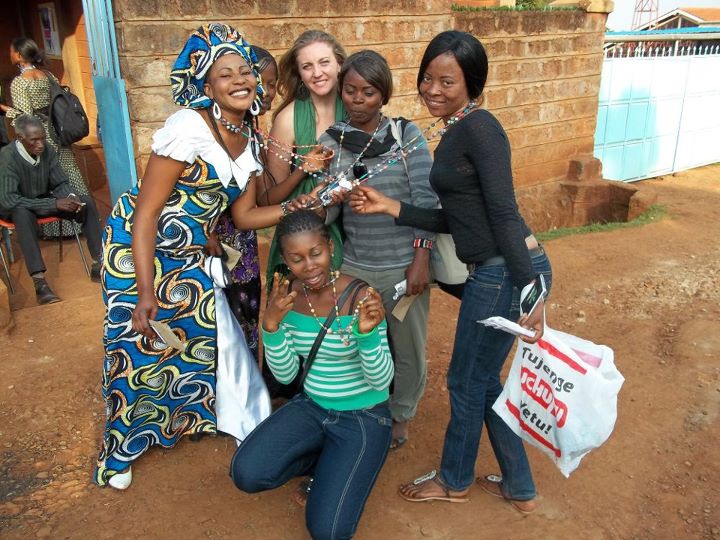The last time I wrote on the Huffington Post about Kenya I was starting a youth empowerment effort, the nature of which was rather vague. I did know that I was in Nairobi with the operational support of the United Nations High Commissioner for Refugees and that of the Great Globe Foundation, which brings theater into Dadaab (the largest refugee camp on the planet, where over this summer the starving, destitute population hit the 400,000-person mark). In my previous post I pointed out that this fogginess was purposeful, and that allowing for innovation was one of the key practices necessary to the future of successful -- and by that I mean sustainable -- community development efforts. I also knew that my goal was to use the creation of text to raise literacy levels as well as enable trauma recovery for refugee girls in Kenya. Armed with only those specifics, I ended up mobilizing the Survival Girls, a theater group for Congolese girls aged 17-22 living in Nairobi's slum of Kangemi. The girls came up with the name for the group, and told me this summer that they had never before encountered a space to create art with only other girls. The gender-based nature of the violence some of them have suffered made "girls-only" space profoundly meaningful to them.

Five of the Survival Girls, Kangemi, Nairobi, Summer 2011 (author's photo)
Not only did the Survival Girls create and perform an original piece of theater about gender-based violence for Nairobi's World Refugee Day festivities on June 20th, but they continued to meet once I was gone and created a piece of theater for an HIV/AIDS awareness campaign in August. This self-sustainability is the most rewarding result I could have hoped for. Moreover, it makes a powerful case for the importance of the concept of "safe space" to youth empowerment, which is a key part of community development in post-conflict zones and therefore in emergent democracies the developing world over.
Over half the world's population is under 30, and close to 90% of nations struck with violence today are those with populations that are largely young. The developing world is home to most of the world's civil strife, which likely means a heartbreaking fact: that most young people on earth are mild-to-severe trauma victims. Psychosocial support for youth is therefore of strategic importance to the economic and political longevity of developing countries in the near future. Secretary of State Hilary Clinton had the good sense to create a task force to look into youth affairs (with Ronan Farrow, a prodigious -- and himself young--force in global youth issues) because she understands the burgeoning importance of youth to the structural integrity of governments worldwide. I'm particularly interested in the connection between that integrity and the oft-poopooed term "safe space" because a successful development effort is a sustainable one, a sustainable effort is one that allows for innovation, and innovation doesn't happen unless folks feel like it's safe to trial-and-err, to make a mistake -- or "have a go", as education expert Sir Ken Robinson puts it.
In his TED Talk, Sir Robinson relates a memory of the three kings in the nativity play at his son's school: one preschooler said, "I brought gold"; another, "I brought myrrh"; and the third, "Frank sent this." Kids will give it a try if they don't know, Robinson argues, but somewhere in there we begin stigmatizing mistakes, sanitizing potentially fertile community spaces out of receptivity to what Paulo Freire calls "ruptura" -- the weeping, the shouting, the fear, the mistake, the revelation of a personal shame, the outburst. Healing doesn't happen without those events; accordingly, development efforts in post-conflict zones won't become sustainable -- won't be hospitable grounds for the innovation necessary to the (re)formation of governments, by the people for the people of specific societies and regions, without some form of the feeling located that is requisite to trauma recovery. It's going to be hard for a society of people to make political strides in development if most people in that society are suffering from varying degrees of post-traumatic stress, which effects many things in the human system for the worse and erodes one's sense of context, consequence, and logic. "Safe space" isn't new-age nonsense, it's a cornerstone of societal advancement. I'd even argue that the internationally galvanizing force of social media in today's youth is as revolutionary as it's become because it's just that: social. When youth sense community, they sense permission to let it out, to sing the song, to, in the case of my Survival Girls, act, recite, and dance out the pain onstage. And then? They're much more likely to move forward as healthy citizens, able to function and cope, to work hard and experience joy.

Six of the Survival Girls rehearse for their performance in Nairobi's World Refugee Day Festivities, June 20, 2011 (author's photo)
The interdisciplinarity of most contemporary successful development efforts, specifically those executed by and targeted at youth, is not an accident. Nor is the growing room for "mistakes" -- that is, innovation -- championed by Sir Ken Robinson and other leading voices in the field of pedagogy. As refugees, the Survival Girls live as second-class orphans in poverty, and as Congolese females who have been forced to flee, they are severe trauma victims and some are survivors of unspeakable gender-based violence. I work at the nexus of identification as an activist, an educator, an advocate, and an artist. I needed to wear all four of those hats to create safe space for the Survival Girls to bond with one another, to begin to address their feelings of shame and fear, and then to create art out of that process, thereby building a road to their own trauma recovery.
I know that strife-ridden societies aren't always furnished with peaceful town squares. That's not the kind of safe space I'm talking about. I'm talking about my girls and me sitting in the dirty corner of a church compound in that Nairobi slum, creating a temporary space from scratch with our presence -- a space that can and does disband, but that is thereby portable, one that humans can carry and give to one another with nothing more than presence. My interests being what they are, I am occasionally the recipient of well-founded inquiries as to what on earth I'm doing studying fiction in Indiana, because in addition to the summer's work in Kenya, over the past decade I worked in Bolivia, Ecuador, Mexico, Russia, Mongolia, Sweden, and Turkey, participating in human rights and freedom of expression advocacy, literary translation, family planning, sustainable forestry, and rural health efforts. I witnessed firsthand various facets of the international development project, and had the chance to look for their unifying thread, before implementing programming of my own. That unifying thread? A sense of stakeholder participation, which required a sense of safety for the participants, for whom raising their voice hadn't always been safe. That programming? I began it this summer, with the Survival Girls.

Five Survival Girls and me (author's photo)
The empathy necessary to write a good work of fiction, the emotional awareness required to create a poem, and the human sensibility called for to purge a traumatic experience through the body onstage are all not only central to artistic creation but to the process of psychosocial support for victims of atrocities, the process of sustainable youth-oriented development effort in post-conflict zones--which is the process of healthy government formation in the developing world. There does not need to exist a border between "high art" and these development efforts, but there is a popularly perceived one, and my work and wish dwell in the gaps between those supposedly disparate disciplines in order to, hopefully, help erode the myth of that distinction. The Survival Girls project represents my first independent foray into that mission.
The Survival Girls have given the author permission to share these photos.